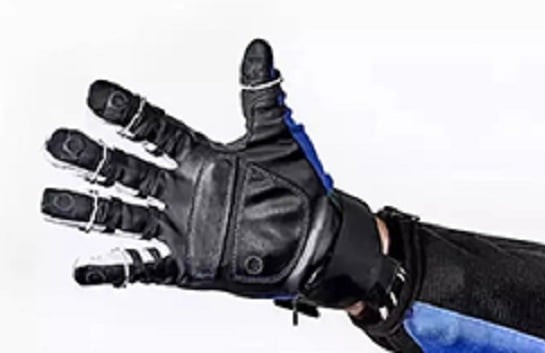General Motors uses a variety of new technologies in its assembly plants, such as robotic arms and 3D printed parts. At the Michigan assembly plant, workers easily process 3D printed parts with the help of a mechanical glove called "roboglove".
3D printing parts save costs on the assembly line
At the Lansing Delta town plant in Michigan, GM is experimenting with 3D printed parts on a large scale. A 3D printer in Lansing Delta town factory can save the factory more than 300000 US dollars in the manufacturing cost of tools and accessories. However, the purchase price of this 3D printer is only about 35000 US dollars. For example, the factory uses 3D printing tools to align the engine and transmission vehicle identification numbers. Buying these tools from third parties will cost the company more than $3000, but using 3D printers to make the same parts costs less than $3.
GM said 3D printers have dozens of uses in factories, including making socket covers, parts, clothes hangers and other ergonomic and safety tools.
We have done a lot of work for many different applications, including the production of auxiliary equipment, graphene tools and prototypes for operators, "said the head of Zane Meike additive manufacturing plant. 3D printing components are made of various powders, including nylon injected with carbon fiber.
In recent years, 3D printing technology has rapidly emerged as a game-changer in the automobile industry. This cutting-edge technology offers tremendous advantages over traditional manufacturing methods, making it a popular choice for many companies. 3D printing technology offers innovative solutions for the production of automotive parts, allowing for the manufacture of complex parts in a matter of hours with reduced costs.
What is 3D printing technology in the automotive industry?
3D printing technology is a manufacturing process that involves creating three-dimensional objects from computer-generated designs, allowing the rapid production of complex automotive parts, such as gears, pistons, and brake systems. The auto industry uses 3D printing technology to prototype and produce parts quickly and more cost-effectively than conventional manufacturing processes.
What is the most common application for 3D printing technology in the automotive sector?
The most common application for 3D printing technology in the automotive sector is the production of prototypes. Besides rapid prototyping, the implementation of 3D technology in the manufacturing process has enabled designers and engineers to create more complex designs and parts that would not be possible with traditional manufacturing methods. This capability has significantly advanced the automotive industry's creative and innovative potential.
How is 3D printing used in car manufacturing?
Automakers use 3D printing technology to produce everything from prototypes, custom tools used in assembly lines, and functional parts. The technology allows manufacturers to optimize the manufacturing process by streamlining the production of complex parts and reduce tooling lead times. This cost savings translates to reduced costs for consumers.
Which technology is used in the 3D printer for printing?
3D printers use several technologies to print, including Fused Deposition Modeling (FDM), Stereolithography(SLA), binder jetting, and PolyJet. FDM is the most prevalent technology used as of now in the automotive industry due to its low cost and ability to produce durable parts. FDM is widely used in the production of automotive tools, jigs, and fixtures that require functionality along with, strength, durability, and stability.
What is the future of 3D printing in the automotive industry?
The future of 3D printing in the automotive industry is promising, with many experts touting its potential to transform the sector. 3D printing technology can improve the performance of cars, reduce costs, lessen inventory requirements, and provide customers with more customization options. The technology provides manufacturers with the possibility to produce parts on-demand, make complex car models more efficiently, and bring innovative and game-changing designs to the market.
What advantages could 3D printing bring to car manufacturing?
3D printing brings several advantages to car manufacturing, such as:
- Cost savings in tooling and prototyping
- Increased accuracy, quality, and consistency in the output
- Streamlined production of complex automotive parts
- Reduced lead-time
- Flexible manufacturing solutions
Through the advantages listed above, 3D printing technology can help manufacturers bring products to market faster while reducing costs significantly.
Conclusion
3D printing technology brings automotive manufacturers a range of high-quality, low-cost advantages over traditional methods and limitless possibilities for creative innovation. The use of 3D printing technology in the automobile industry provides an alternate approach that allows for more efficient manufacturing, reduced lead time, higher quality parts, and more complex design possibilities. Given the numerous advantages of 3D printing, it is not surprising that the technology is rapidly emerging as the next-generation solution for the automobile industry.




